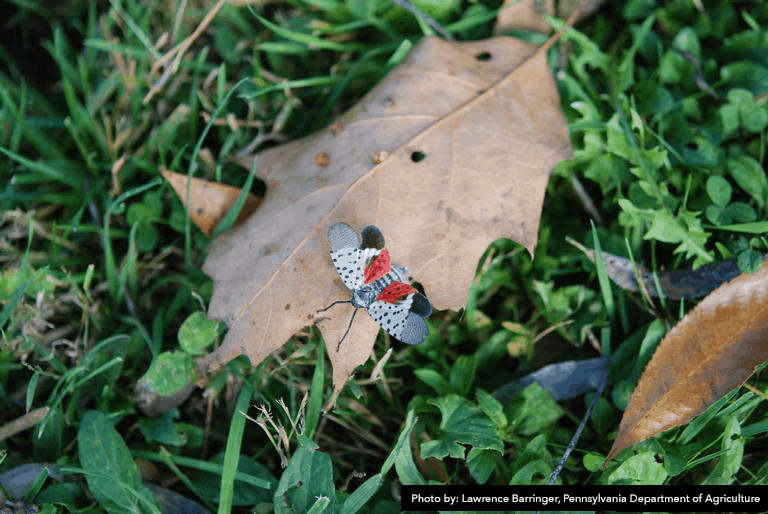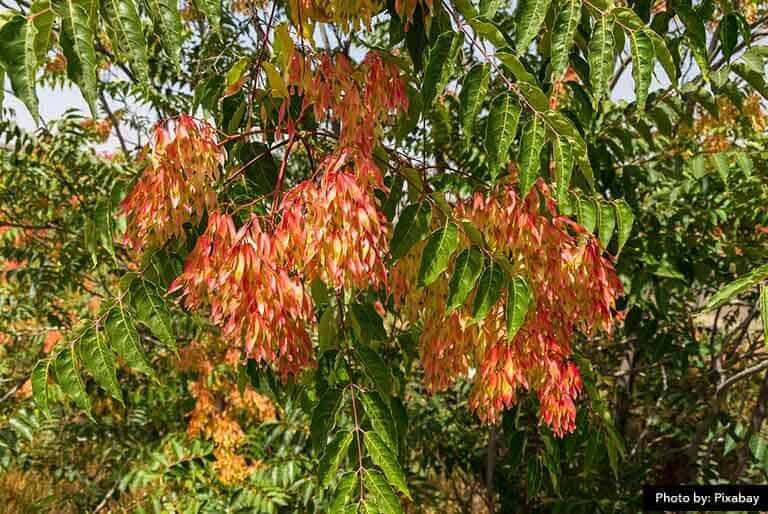If your facility is located in one of the affected Pennsylvania counties, you have probably heard about or have some familiarity with the Spotted Lanternfly. If you have not, the PA Department of Agriculture currently has a quarantine regulating the transport of plants, plant-based materials, and outdoor household items that is in effect for the following counties: Berks, Bucks, Carbon, Chester, Dauphin, Delaware, Lancaster, Lebanon, Lehigh, Monroe, Montgomery, Northampton, Philadelphia, and Schuylkill.
Read on for more information about the Spotted Lanternfly, its potential impact on Pennsylvania’s economy, ways to identify it and how to prevent it from invading your property or controlling an infestation before it spreads to your site.
What is a Spotted Lanternfly?

The Spotted Lanternfly is an Asian species of an invasive insect that was first identified in Berks County in 2014. The species is known for being attracted to and feeding upon fruit-bearing species of native Pennsylvania trees. This is particularly threatening to vineyards, orchards and other agricultural producers who contribute roughly $18 billion to the state’s economy. The most destructive part of the Spotted Lanternflies’ feeding is a sugary substance called “honeydew,” that is excreted onto the plant and causes mold growth that leads to damage or death of the plant. If left unchecked, Spotted Lanternflies could infest an area the size of Pennsylvania in just three years.
Spotted Lanternflies lay their eggs in masses, containing between 30-50 eggs each, between the months of September through December. One female can lay approximately 200 masses in a year. The eggs hatch and enter the nymph phase between April and July, entering full maturity between August and December when feeding becomes a destructive issue that must be controlled.
The egg masses can be affixed to trees, outdoor furniture and even stones. They are about an inch long, flat and appear as a putty-like substance that eventually turns to a cracked-mud appearance over time.
Early stage nymphs are small black insects with white spots and no wings, that eventually grow into late stage nymphs that are about a half an inch in size with a mostly red and black body with white spots and tiny wings.
An adult Spotted Lanternfly is about an inch in size, with large, tan-colored wings featuring large black spots. With its wings open, the adult Spotted Lanternfly has distinctive splashes of red on the inner wings with black and white markings on the outside.
Relationship to Tree-of-Heaven

The tree-of-heaven (Ailanthus Altissima) is an Asian species of deciduous tree that is commonly found in southern regions of Pennsylvania. The species is also known for attracting Spotted Lanternflies and will continue to attract the invasive insect year after year if left on a property. In addition to its ability to attract Spotted Lanternfly, the tree-of-heaven is also known for being a high pollen producer that contributes to seasonal allergies for some individuals.
According to Donnie Cooper, Evercor’s Landscape and Lawn Maintenance Area Field Manager for the Allentown region, the best course of action for preventing a Spotted Lanternfly infestation, or the reoccurrence of one, is to remove any and all species of tree-of-heaven from a property.
Complying with the PA Department of Agriculture Quarantine
Penn State University has partnered with the Pennsylvania Department of Agriculture to offer a free, self-paced, online course to train staff on methods for identifying and preventing the transport and spread of the Spotted Lanternfly.
Once the designated staff has completed and passed the training, your company will be issued the appropriate permits for company vehicles to transport goods. A business toolkit and additional literature are also provided by the program for staff members to educate others throughout their organization on identifying and preventing the transport of Spotted Lanternflies.
If you are not sure if your business needs a spotted lanternfly permit, check out this article from Penn State University Extension to determine if your business meets the quarantine criteria.
If you believe you have a spotted lanternfly infestation on your property, you should report it to Penn State Extension. The information is entered into a database that is used by the USDA and the PA Department of Agriculture to schedule treatments when funding is available. If your property is outside of the quarantine, it is especially important to report the finding as soon as possible. Any action you can take to help minimize the population is also incredibly helpful. Property or business owners should scrape any egg masses with a credit card or putty knife into a bag or container and covered with alcohol or hand sanitizer.
Be Prepared with Evercor
All of Evercor’s landscape and lawn maintenance staff receive training on identifying Spotted Lanternflies. In the event that an Evercor crew member identifies Spotted Lanternflies on your property, a general manager is immediately notified and the issue is brought to the property manager’s attention. Our subsidiary, Procor Pest Control, is equipped to handle infestations both large and small.
Once the infestation has been managed, Evercor’s landscape and lawn maintenance team can help with identifying any plants that might attract Spotted Lanternflies, such as tree-of-heaven, and remove them to prevent future infestations.
Being proactive about your property’s maintenance and informed of its characteristics, and with the help of trusted partners like Evercor, you can help protect Pennsylvania’s economy and prevent the spread of this destructive insect.